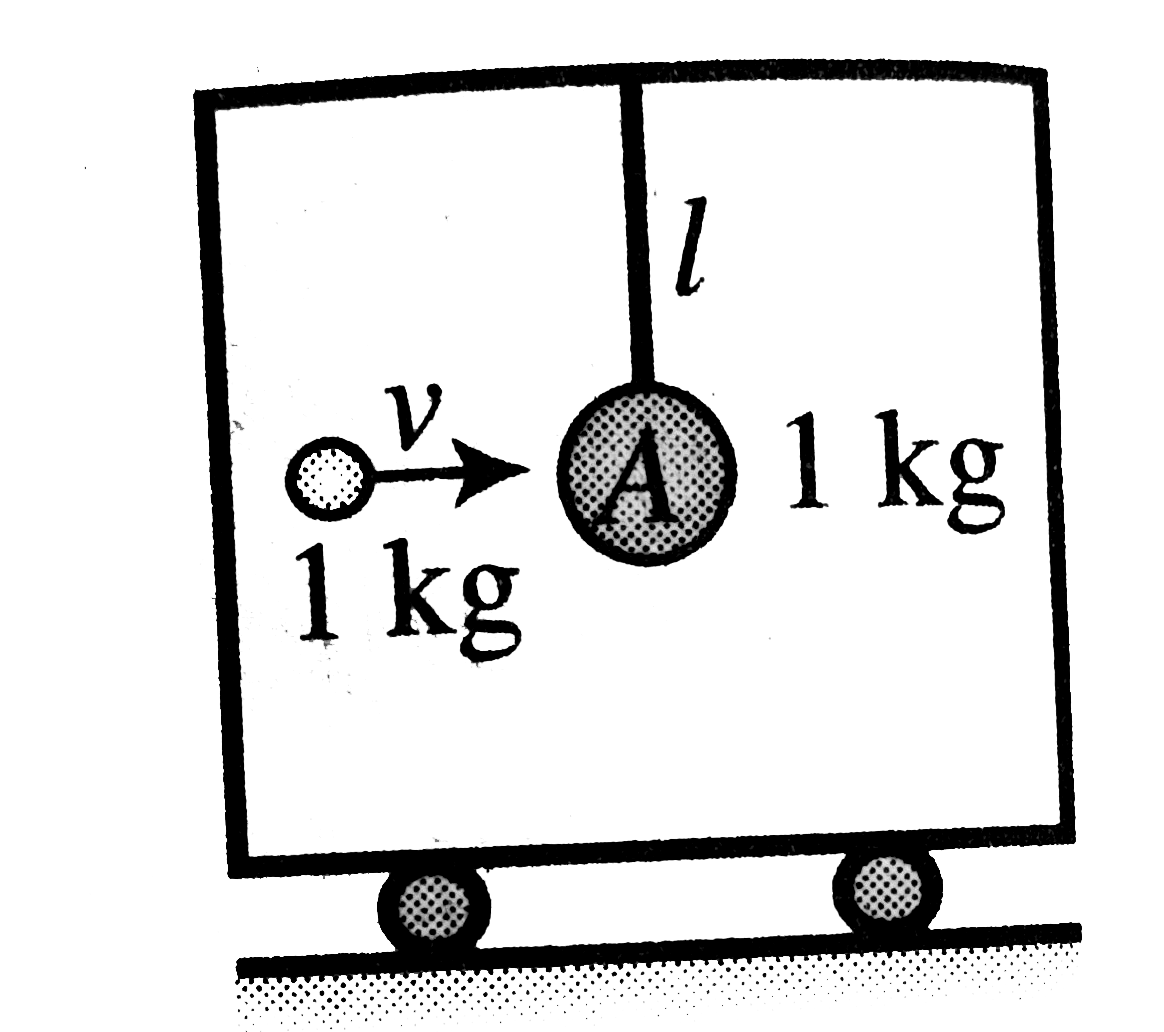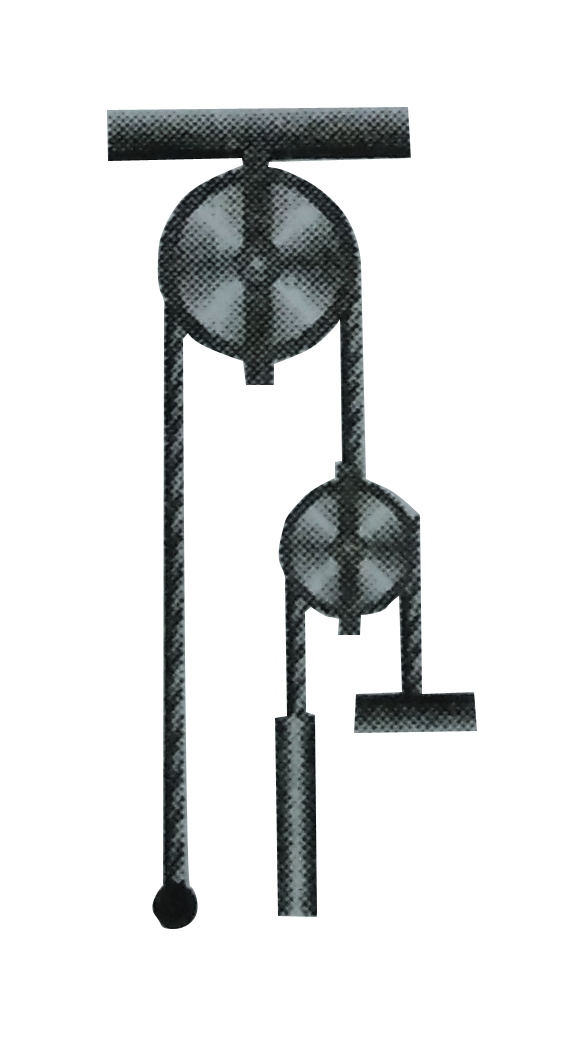The mass of a ball is 1.76kg. The mass of 25 such balls is
0.44×103kg
44.0 kg
44kg
44.00kg
The correct Answer is:B
To find the mass of 25 balls given that the mass of one ball is 1.76 kg, we can follow these steps:
1. Identify the mass of one ball:
The mass of one ball is given as 1.76 kg.
2. Determine the number of balls:
We need to find the mass of 25 such balls.
3. Calculate the total mass:
The total mass of 25 balls can be calculated using the formula:
Total Mass=Mass of one ball×Number of balls
Substituting the values:
Total Mass=1.76kg×25
4. Perform the multiplication:
1.76×25=44.0kg
5. Consider significant figures:
The mass of one ball (1.76 kg) has three significant figures. Therefore, the total mass must also be expressed with three significant figures. The result, 44.0 kg, has three significant figures (the zero after the decimal point counts as significant).
6. Final Answer:
The mass of 25 balls is 44.0 kg.
Summary:
The mass of 25 balls is 44.0 kg.
---
The mass of one ball is given as 1.76 kg.
We need to find the mass of 25 such balls.
The total mass of 25 balls can be calculated using the formula:
Total Mass=Mass of one ball×Number of balls
Substituting the values:
Total Mass=1.76kg×25
1.76×25=44.0kg
The mass of one ball (1.76 kg) has three significant figures. Therefore, the total mass must also be expressed with three significant figures. The result, 44.0 kg, has three significant figures (the zero after the decimal point counts as significant).
The mass of 25 balls is 44.0 kg.
The mass of 25 balls is 44.0 kg.
Topper's Solved these Questions
- BOOK - DC PANDEY ENGLISHCHAPTER - MEASUREMENT AND ERRORSEXERCISE - Subjective19videos
MEASUREMENT AND ERRORS
- BOOK - DC PANDEY ENGLISHCHAPTER - MEASUREMENT AND ERRORSEXERCISE - Exercise 2.42videos
MEASUREMENT AND ERRORS
- BOOK - DC PANDEY ENGLISHCHAPTER - MAGNETIC EFFECT OF CURRENT AND MAGNETISMEXERCISE - Integer type Questions10videos
MAGNETIC EFFECT OF CURRENT AND MAGNETISM
- BOOK - DC PANDEY ENGLISHCHAPTER - MOTIONEXERCISE - Medical entrances gallery19videos
MOTION
Similar Questions
In the arrangements shown in the figure masses of each ball is 1kg and mass of trolley is 4kg. In the figure, shell of mass 1kg moving horizontally with velocity v=6ms−1 collides with the ball and get stuck to it then its maximum deflection of the thread (length 1.5m) with vertical
 View Solution
View SolutionA ball has acceleration of 98cms2 in a liquid of density 1g(cm)3. The radius of ball is 1cm. Find mass of ball (g=980cms2)
View Solution
Knowledge Check
- Question 1 - Select One
A batsman hits back a ball straight in the direction of the bowler without changing its initial speed of 12ms−1 . If the mass of the ball is 0.15 kg , determine the impulse imparted to the ball . (Assume linear motion of the ball).
A1.8N sB2.8N sC3.6N sD4.2N s
In the arrangement shown in figure the mass of the ball is η times as that of the rod. The length of the rod is L the masses of the pulleys and the threads as well as the friction, are negligible. The ball is set on the same level as the lower end of the rod and then released. How soon will the ball be opposite the upper end of the rod?
 View Solution
View SolutionIn the given figure balls A&B are released simultaneously , when string is horizontal , length of strings are same but mass of ball B is twice of mass of ball A. Then
 View Solution
View Solution(a) An iron ball requires 5000 J heat energy to raise its temperature by 10∘C. Calculate the heat capacity of the iron ball.
(b) If mass of ball is 1.1 kg, find the specific heat capacity of iron.View SolutionA ball of mass 4 kg moving on a smooth horizontal surface makes an elastic collision with another ball of mass m at rest in the line of motion of first ball. If after collision first ball moves in the same direction with one fourth of its velocity before collision, then mass of second ball is
View SolutionA batsman hits back a ball straight in the direction of the bowler without changing its initial speed of 12ms−1 . If the mass of the ball is 0.15 kg , determine the impulse imparted to the ball . (Assume linear motion of the ball).
View SolutionA batsman hits back a ball straight in the direction of the bowler without changing its initial speed of 12ms−1 . If the mass of the ball is 0.15 kg , determine the impulse imparted to the ball . (Assume linear motion of the ball).
View SolutionA batsman deflects a ball by an angle of 45∘ without changing its initial speed which is equal to 54kmh. What is the impulse imparted to the ball ? (Mass of the ball is 0.15 kg)
View Solution

